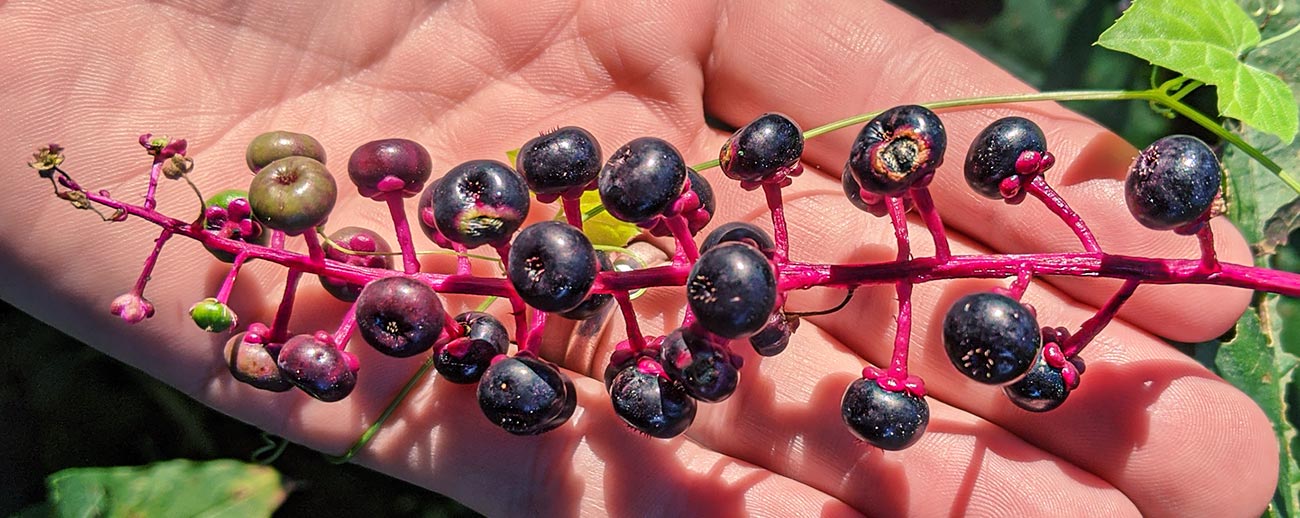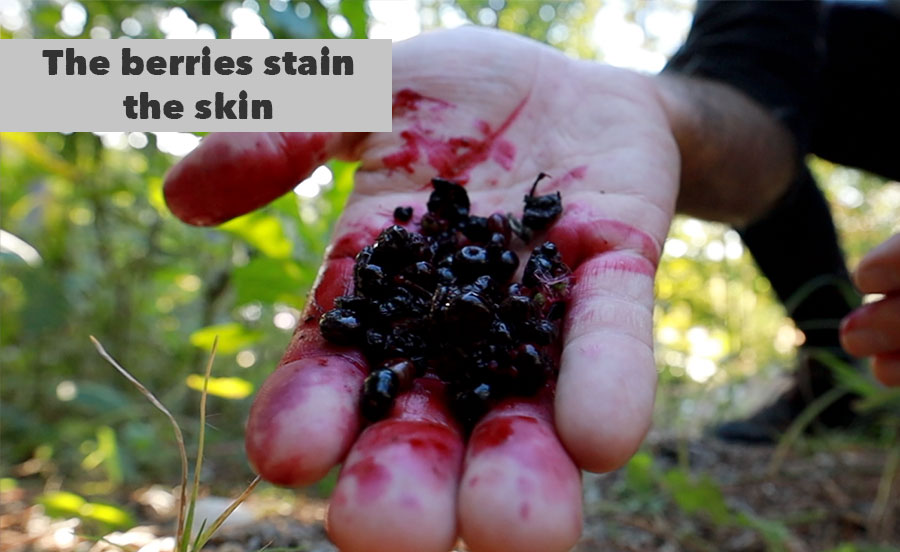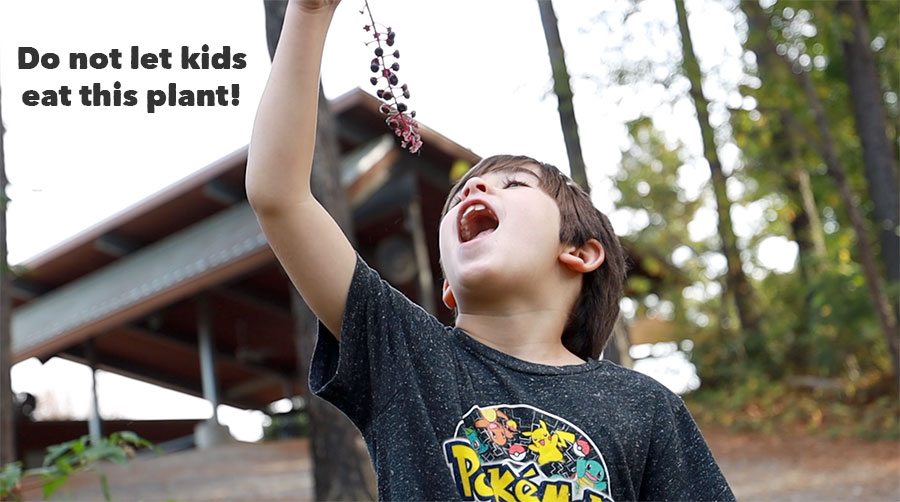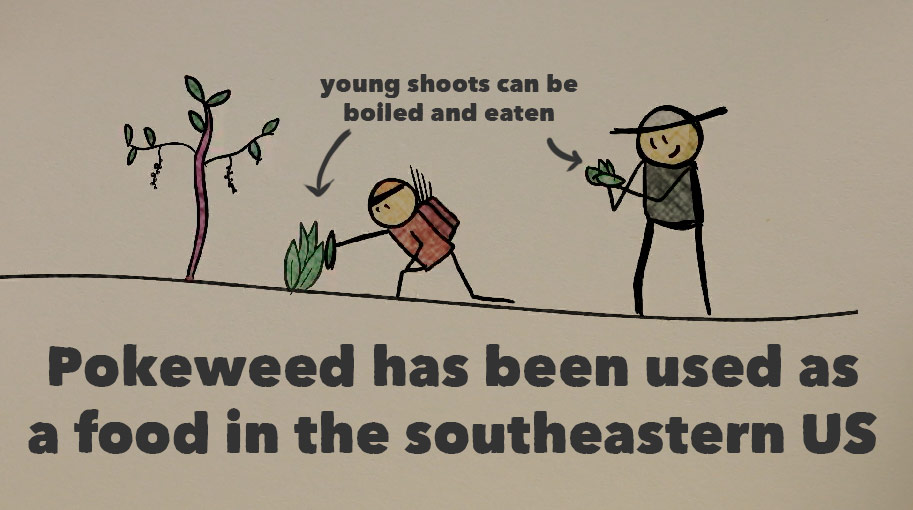Deadly Poisonous Pokeweed is Actually Edible If You Do it Right

Recently, I have had a small obsession with this deadly toxic plant. Part of that is because it is actually very edible and is still eaten in many parts of the south. BUT WHY?
This seemingly contradictory information has lead me down a rabbit hole of information online to try and understand what is going on with this plant. Should you eat it, avoid it, or just revel in its beauty.
Like much of what I do, I start this article with a short video on it, followed by all the information I discovered about it. My pokeweed video first:
If you’re interested in some of the more detailed conversations I’ve had with researchers about this you can see the video conversation below. Now let’s understand some of the common misconceptions.
Pokeweed Myths and Misconceptions Explained
One myth that is commonly spread around is the pokeweed ink was used to write the declaration of independence. This is NOT true. I interviewed pokeweed researcher Dr. Carin Baskett who researched this topic extensively and she said that it’s just a legend. So definitely don’t spread this rumor around.
Possible uses of Pokeweed
Pokeweed has been used for a lot of things in traditional Appalachian culture as well as American Indian practices. These include:
- Plant dyes for painting or coloring clothes
- Edible leaves for sallats (not salads – you need to cook them first).
- Potential alternative medicines or herbal medicines.
- A beautiful garden plant! Pokeweeds worldwide are mostly a tropical genus, but American pokeweed has had a temperate spread.

Is Pokeweed Poisonous to the Touch?
Many people have been told that pokeweed is poisonous to touch, but that’s not exactly true. It’s definitely not a skin allergen in the way poison ivy is. Touching the stems or leaves should have no effect at all. However, I have heard of multiple reports of people that have used the berries as a type of wild skin-paint and had allergic reactions to it.
How do you get rid of pokeweed rash?
First, wash the skin with soap and water to get the toxins off. Avoid scratching the skin as this could break the protective barrier your body has and lead to secondary infection. Apply calamine lotion to help dry and heal the injured skin.
What part of Pokeweed is Poisonous?
All parts of the pokeweed plant are poisonous. The young shoots in early spring are considered the most palatable leaves, but they still have some toxin. Roots are the most toxic, followed by the stems, new leaves, old leaves, unripe berries and then ripe berries. The berries tend to have the least amount of toxin in them.
Should I make a salad out of Pokeweed?
No. No. No.
This is not recommended even though when you hear the common name, Poke Salat, it sounds like poke salad. Salat implies that it should be grilled our boiled. This likely breaks down some of the toxic chemicals in the plant.
Can Pokeweed Kill you?
It definitely can. I combed through the relevant medical literature and there are many reports of poisonings. The lethal dose was

Can you Eat Pokeweed
You can eat pokeweed and in fact, people have done so for a long time. However, you the only part of the plant you eat are the young leaves in that emerge in the spring. Presumably these leaves are less toxic as they’re trying to grow quickly. If you prepare them you need to boil them three times, and rinse out the water each time. This is what is known as poke sallat.
Some people report eating one ripe berry every so often as a treatment for rheumatism and as an immune stimulant. It’s also been reportedly used as a treatment for tonsillitis, mumps, glandular fever, chronic catarrh, bronchitis, and as an anti-AIDS drug. But, none of these are proven. Just remember that there are no clinical trials to back this up, so you should be extremely wary of all of the alternative treatments this plant has been used for.
Why you would eat pokeweed?

People have eaten pokeweed for a long time. That means it’s a traditional food and has traditional recipes. It’s not without risk, of course. If you don’t boil it long enough you’ll likely end up in the hospital.
The idea has always been that people at this plant because it was something edible in the spring (even if you have to prepare it carefully). Interestingly, pokeweed is more toxic in the southern range of the plant, (as studied by Dr. Carin Baskett – see video below).
Can I get rid of pokweed?
If you have a fear that pets or kids will accidentally eat the berries and really feel the need to get rid of pokeweed, there are a few methods that might work – Although I’m convinced that after putting pokeweed berry in your mouth, you’ll not want to eat it again (see my pokeweed video).
- You could pull the plant as it grows. However, understand that it puts out a deep taproot and that just pulling it will likely allow it to create new shoots that will grow more pokeweed.
- Spray it with an herbicide. You’ll want to spray it when it’s green and growing. Non-selective glyphosates, like Roundup are good for this.
- Using vinegar or boiling water are other options to get rid of your pokeweed.
Just remember that you have a beautiful plant on your hands here and it’s only toxic in larg(ish) doses or if you are mistaking it for an edible plant.
Learn more about Pokeweed: An Interview
The following is an interview I had with the expert on pokeweed toxins, Dr. Carin Baskett. If you’re interested in learning more about pokeweed, this conversation might interest you.
Remember, you can always learn more about this and more in my new book, Mother Nature is Not Trying to Kill You.
Disclaimer: The StoneAgeMan blog is for informational purposes only and does not constitute medical advice. We are not responsible for any actions taken based on the information provided. Always consult a healthcare professional before using plants for medicinal purposes.

